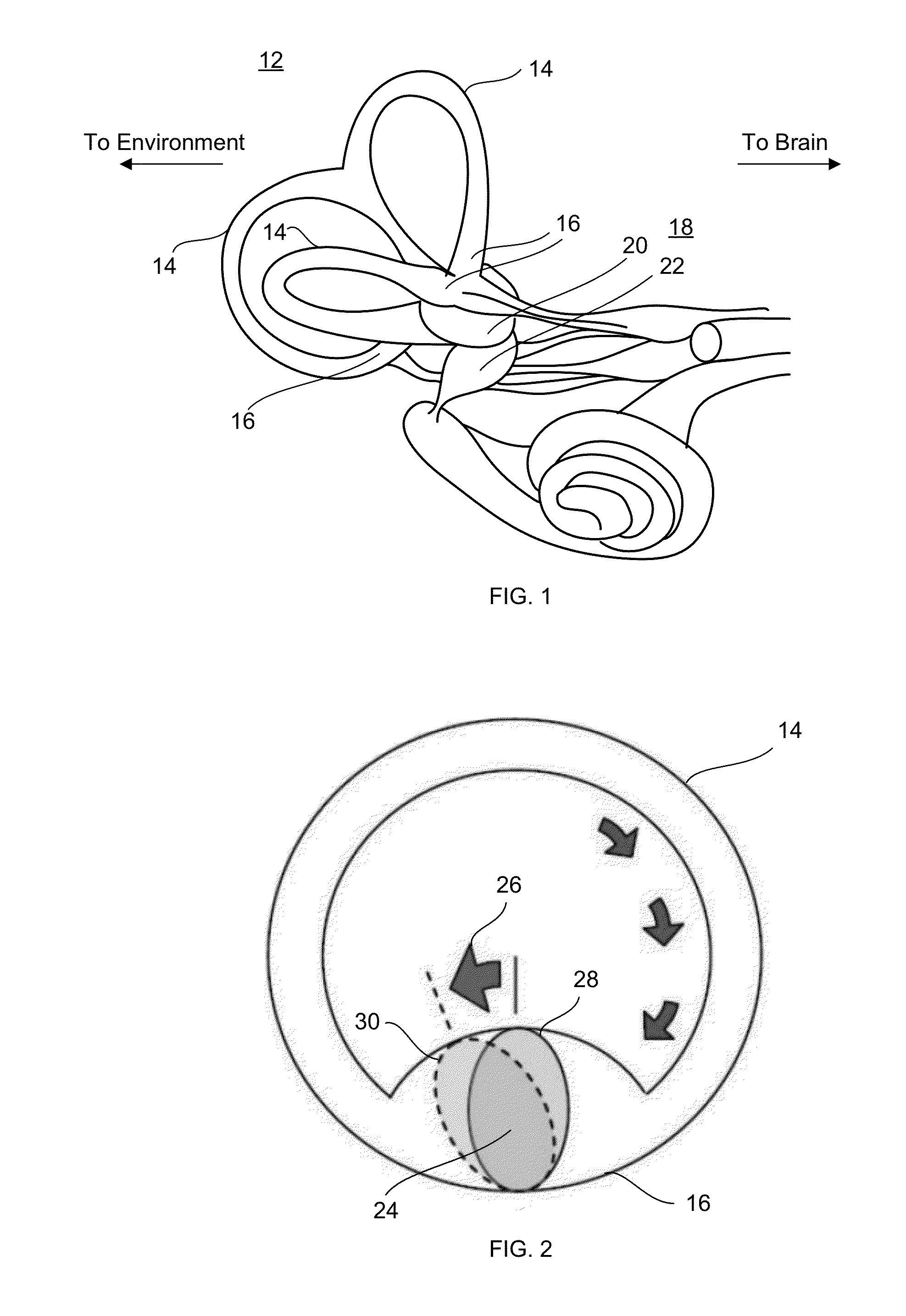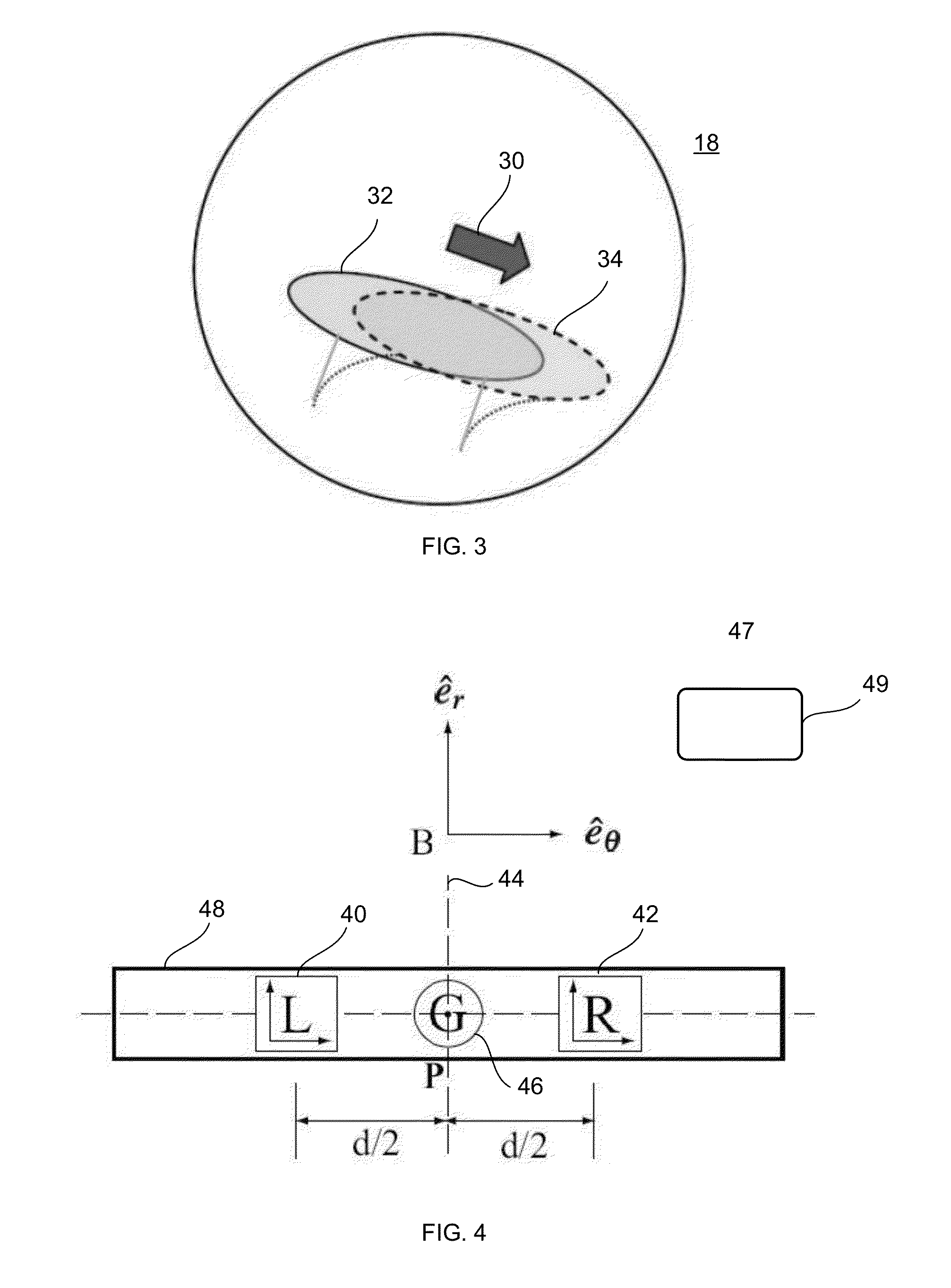Vestibular dynamic inclinometer
a dynamic inclinometer and inclinometer technology, applied in the direction of speed/acceleration/shock measurement, instruments, surveying and navigation, etc., can solve the problems of small errors in gyroscope signal, less accurate technique, and incomplete information of linear acceleration about all inclination parameters
- Summary
- Abstract
- Description
- Claims
- Application Information
AI Technical Summary
Benefits of technology
Problems solved by technology
Method used
Image
Examples
Embodiment Construction
[0055]Novel inertial sensing sensors and method of determining inclination parameters of a body are presented. Inclination parameters of a body are defined herein as the inclination angle from a reference, angular velocity, angular acceleration and magnitude of acceleration of the surface of contact. A Vestibular Dynamic Inclinometer (VDI), disclosed herein, measures the inclination parameters for two degrees of freedom robot and can be extended to measure joint parameters for links moving in a plane i.e. links joined by revolute joint or the base link. A planar Vestibular Inclinometer (pVDI), also disclosed herein, measures the inclination parameters of five degrees of freedom robots. It can also be used to measure joint parameters for links joined by a universal joint and a moving base link in contact with a ground surface. The VDI And pVDI are motivated by a complete different analogy of the human vestibular system-sensor multiple multi-axis linear accelerometers (two or four) an...
PUM
 Login to View More
Login to View More Abstract
Description
Claims
Application Information
 Login to View More
Login to View More - R&D
- Intellectual Property
- Life Sciences
- Materials
- Tech Scout
- Unparalleled Data Quality
- Higher Quality Content
- 60% Fewer Hallucinations
Browse by: Latest US Patents, China's latest patents, Technical Efficacy Thesaurus, Application Domain, Technology Topic, Popular Technical Reports.
© 2025 PatSnap. All rights reserved.Legal|Privacy policy|Modern Slavery Act Transparency Statement|Sitemap|About US| Contact US: help@patsnap.com



